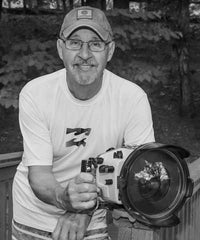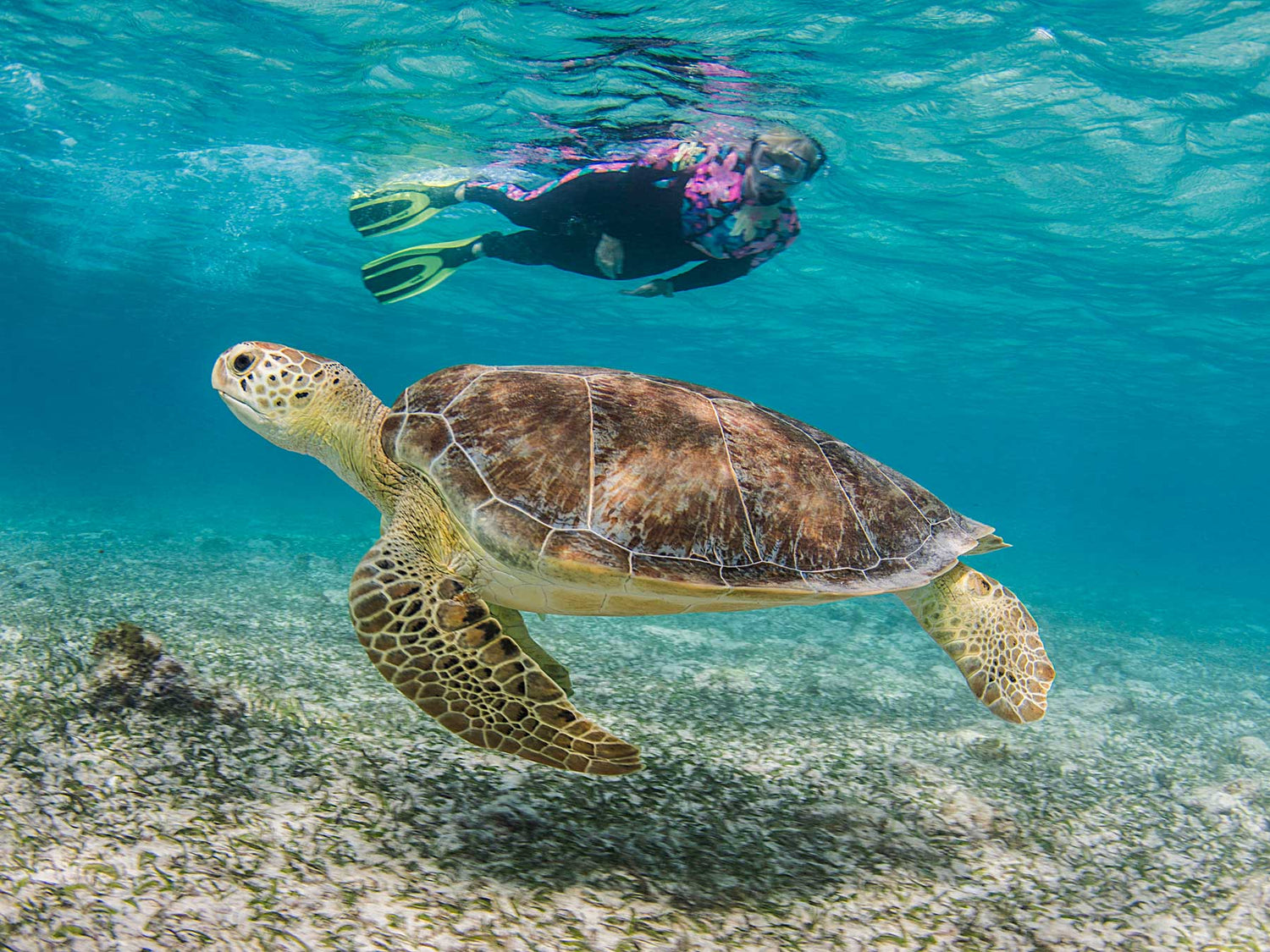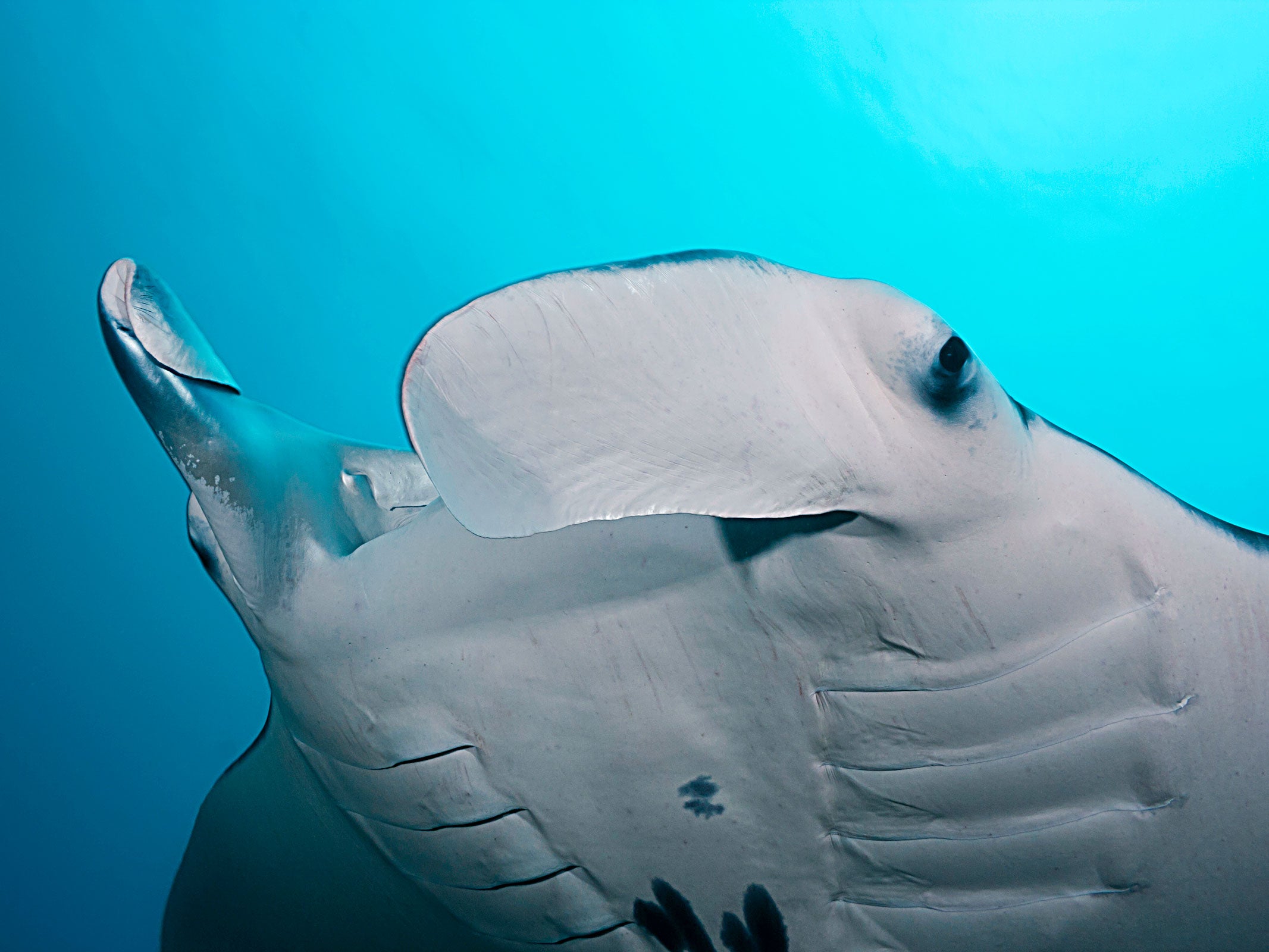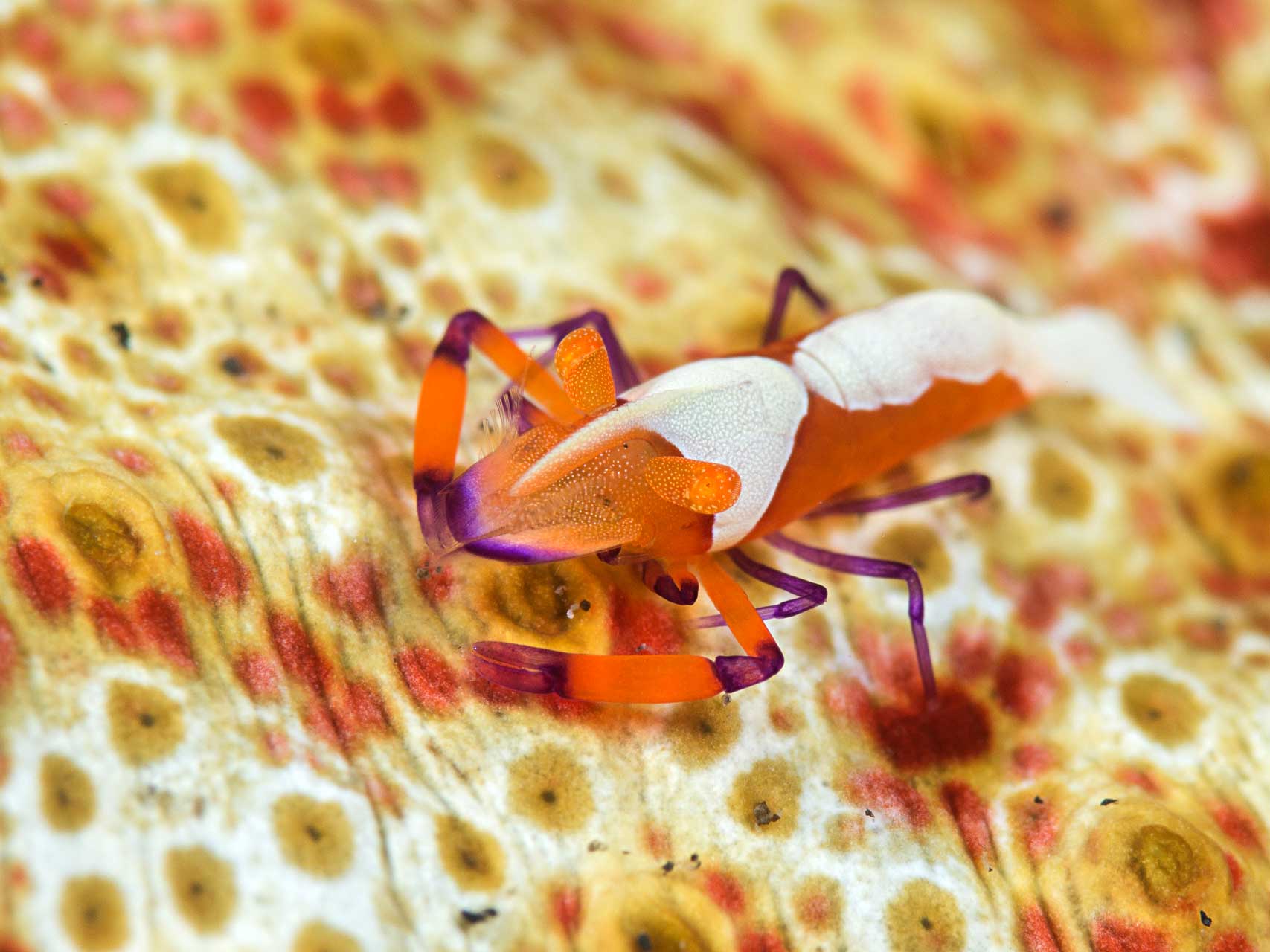By Ambassador Glenn Ostle
Ikelite housings are designed for underwater use, but it is good to remember that "underwater" doesn’t always entail diving. A good example was our recent trip to Cayman where we used the housing several times, without gearing up.
The first instance was snorkeling at Spotts beach, well known as a place to find 3-4-foot (1-1.2 meter) Green Turtles munching on the local eel grass. In years past, we have encountered as many as ten different turtles at one time which allowed us to sometimes get two or three animals in the same shot. Titanium tags on the flippers of some of the turtles identify those that have been released into the wild from the local Cayman Turtle Center.

There can be so many turtles that sometimes it seems like you have double vision at Spotts Beach • 17mm • ISO 250 • f/8 • 1/200 • Manual mode
Conditions at this beach are not always ideal. When the weather is kicking up, water conditions inside the reef can become too rough for good snorkeling. The area is also notorious for having strong rip tides. And while warnings not to touch or harass the turtles are posted prominently on signs along the beach, they are often ignored by over-exuberant tourists.

The trim weight system comes in very handy when freediving and shooting without strobes • 5mm • ISO 100 • f/3.9 • 1/280 • Fujifilm XP50 camera in Program mode
To photograph these turtles I shoot available light, most recently using my Nikon Z6 camera in a DL200 housing. I also prefer the large 8” dome which is great for the wide angle shots but can make the housing very buoyant as there are no heavy strobes to keep it upright. Air inside the dome also tends to make the housing want to turn upwards. To counter this, Ikelite has come up with a nifty weight trim package that includes a single lead weight strapped to a sliding arm attached to the housing’s base plate. Sliding the weight back and forth adjusts buoyancy and camera position and allows me to get the camera to float upright and next to me in the water. This obviously minimizes the strain of trying to keep it in an upright position while diving down to get a shot.
See More: Achieve a Perfectly Balanced DSLR or Mirrorless Housing

Aperture priority mode is useful for these conditions where available light and depth can be quickly changing • 15mm • ISO 200 • f/8 • 1/320 • Aperture priority mode
I typically photograph the turtles in manual, aperture priority, or shutter priority mode, and often with auto ISO. Shutter-priority allows me to easily adjust shutter speed to either freeze quick movements or try some slower shutter speeds to capture movement.
The turtles feed in water that is only about seven feet deep, so we always try to give them plenty of space. If we approach too fast, the turtle will quickly swim away. If we take our time, we are often able to approach to within a few feet. This also seems to depend on the temperament of the particular turtle we are approaching; some are very skittish while others are more tolerant and allow us to get quite close. The challenge is trying to get in front of a turtle for a good face shot as they have the annoying tendency to continuously turn their backs to anyone approaching.

A good model can make a big difference in your photos. The challenge is to get positioned around the turtle without scaring him or her • 10mm • ISO 200 • f/8 • 1/200 • Manual mode
We typically try to get to Spotts Beach first thing in the morning. This produces some nice sun rays shining down onto the turtles. I also like to convert some of the photos into black and white which really makes the sun rays stand out. There are also some interesting shots shooting up at the turtles as they go up to breathe, as their image is reflected on the underside of the surface of the water.
Read More: Black and White Conversion for Underwater Photography

Sun rays are beautiful in shallow water photography and a black and white conversion can really turn them into a focal point. This photo was converted to black and white in editing • 10mm • ISO 200 • f/7.1 • 1/200 • Manual mode
I also can’t stress enough the advantage of having a willing model along. Pictures of turtles by themselves are great, but having a person in some of the pictures adds a human dimension and provides a way of adding some additional color to the shot (thanks, Pam!).
Another benefit of using the housing and large dome here is to capture over/under or split shots with the land in the top half of the picture and underwater in the bottom half. This is tricky so calm water is best. Spotts has a very scenic shoreline, so it is a good place to try these types of shots.

A big dome is critical when shooting over-unders or "split shots" where the dome is half-in and half-out of the water. The large surface area makes it easier to control the water line • 14mm • ISO 200 • f/20 • 1/200 • Manual mode
Grand Cayman also has another great snorkeling site perfect for a housing and large dome, namely the Sandbar in Stingray City. Located on the north side of the island, this area attracts a large number of stingrays in waist deep water which allows divers and non-divers alike, the opportunity to interact with, photograph and even feed the large animals. As the site is so shallow, it is a great place to get some exceptional shots of the rays as guides hand feed them chopped up squid. And when the sky is blue and snowy white clouds rest on the horizon, it is possible to get some striking over/under photos.

The sandbar at Stingray City is the perfect place to work on your split shots, especially on a calm, partly cloudy day • 11mm • ISO 100 • f/9 • 1/125
During our trip, we also wanted to get a nice over/under photo of one of Cayman’s famous sunsets. The ideal place to try this is on the north side of the island at a place eponymously named Starfish Point.
For years, this area has attracted a number of starfish which congregate in very calm, shallow water close to shore. As a caution, due to past abuses of the starfish, today it is illegal to remove them from the water, and signs to this effect are posted along the beach.

One of the biggest challenges when shooting split shots is balancing the exposure above and below water, especially at dawn or dusk. This image is a composite of two photos taken consecutively • 14mm • (top photo) ISO 400 • f/13 • 1/320 • (bottom photo) ISO 6400 • f/5.6 • 1/320
Our idea for a picture was to get a shot of the starfish underwater in the bottom of the frame, and a beautiful sunset in the upper portion. But we soon found that this was difficult to do without strobes, due to the wide range of light. When the sunset is at its prettiest, the water is quite dark, so different exposures are required for both the top and bottom scenes. At this point, I thought of Steve Miller, another Ikelite Ambassador, who has in the past posted some exceptional “combination” shots where he has taken two photos at different exposures (and even at different places) and combined them into a single photo. We tried this same creative approach by holding the housing in one position and taking a shot of the sunset at one exposure, and a separate shot of the starfish at a different exposure. When we stitched them together in Photoshop we were pleased with the result.

Stingrays come in for feeding at the Sandbar • 10.5mm • ISO 400 • f/2.8 • 1/2000 • Aperture priority mode
The point of sharing all these experiences is that underwater housings are not just for diving, but can be effectively used for many types of shots, without ever having to strap on a tank.
 Ambassador Glenn Ostle has been taking underwater photos for more than 25 years, starting with Nikonos cameras in the 90s. Since switching to housed cameras, he has owned seven Ikelite housings. Before he retired, he spent 30 years in industrial marketing and 10 years as publisher and editorial director of a leading trade magazine. During that time he also contributed articles and photos to a Florida-based travel magazine, which he continues to do today. Glenn and his partner, Pam Hadfield, travel and dive extensively around the world. Besides underwater photography, he is also an avid bird and land photographer. His photos can be viewed at featherandfins.smugmug.com, and he posts photos regularly on Instagram @ostleglenn. Read more...
Ambassador Glenn Ostle has been taking underwater photos for more than 25 years, starting with Nikonos cameras in the 90s. Since switching to housed cameras, he has owned seven Ikelite housings. Before he retired, he spent 30 years in industrial marketing and 10 years as publisher and editorial director of a leading trade magazine. During that time he also contributed articles and photos to a Florida-based travel magazine, which he continues to do today. Glenn and his partner, Pam Hadfield, travel and dive extensively around the world. Besides underwater photography, he is also an avid bird and land photographer. His photos can be viewed at featherandfins.smugmug.com, and he posts photos regularly on Instagram @ostleglenn. Read more...
These images were taken using Nikon DSLR and mirrorless cameras and Tokina 10-17mm lens (except where noted). Glenn currently shoots a Nikon Z6 mirrorless camera in the 200DL Underwater Housing # 71063. All photos and text copyright © 2020 Glenn Ostle
Additional Reading
Stingray City Underwater Camera Settings and Technique
Streaming Light Rays Underwater Camera Settings
Over-Under (Split Shots) Underwater Camera Settings
Why You Need a Fisheye Lens Underwater
First Look Nikon Z6, Z7 Mirrorless Underwater Housing
Cousteau's Aquarium | Sea of Cortez with the Nikon Z6













